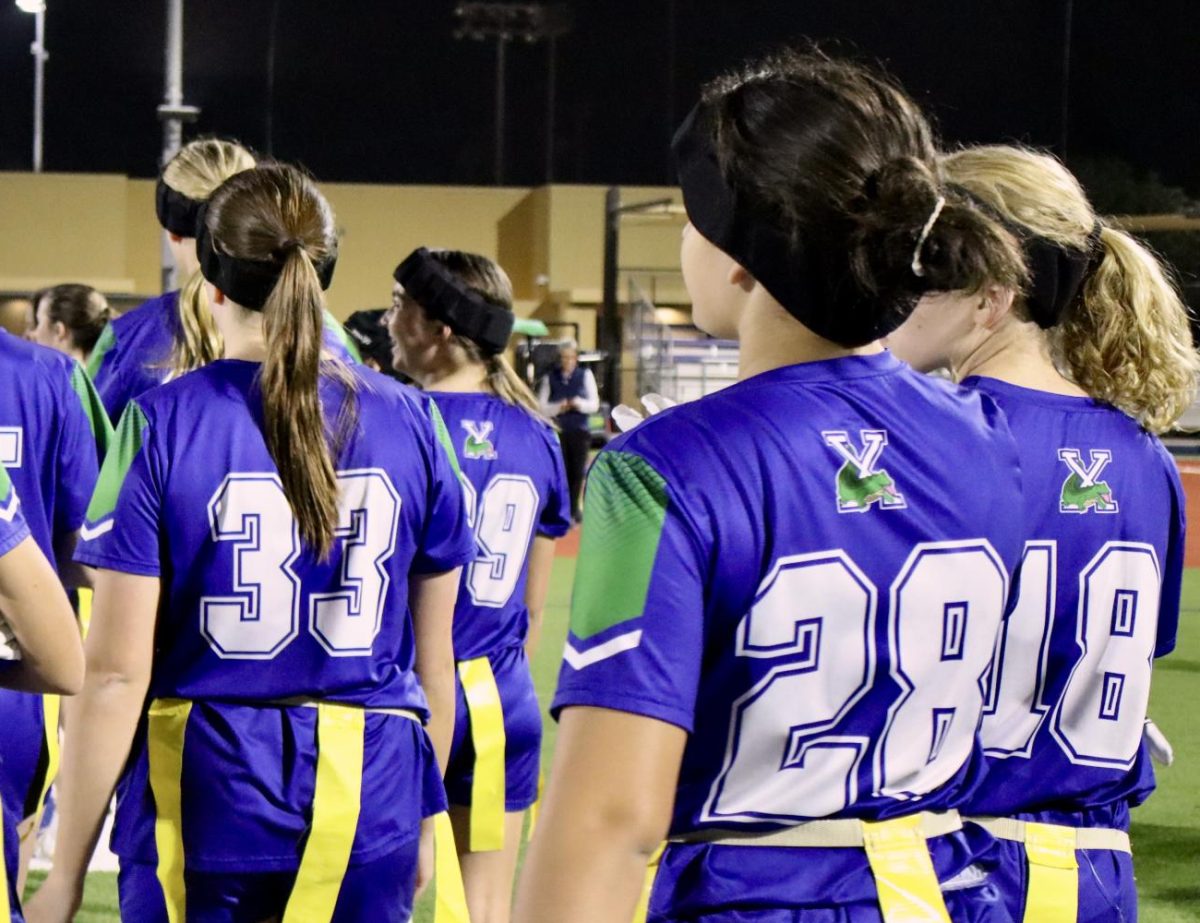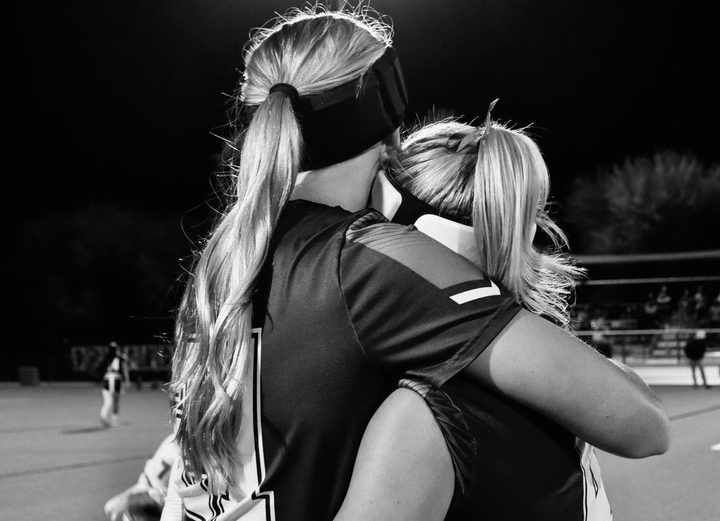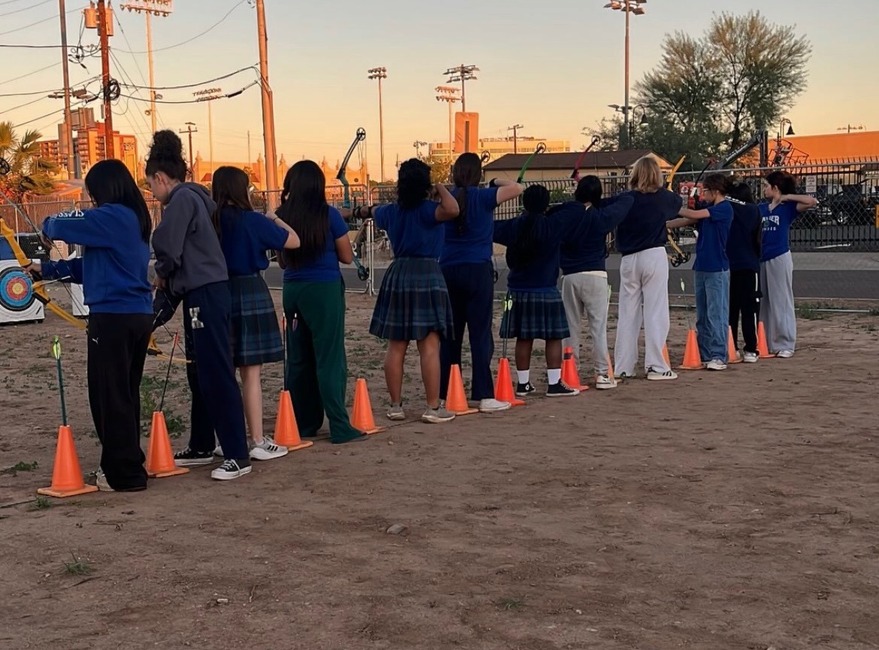Beads of sweat flowed down their faces, splashing of water, labyrinthine bridges, one thousand meters left, crash. Dead in the water, no movement, pick it up, keep going, qualify. All of those terms don’t seem to belong within the same story, but they do.
On Sunday October 19, two Xavier rowers, Emma Perry ‘28 and Ella Boyle ‘27 took on a daring challenge, racing a double down the Head of the Charles, one of the largest rowing events in the world. With thousands of different crews alongside them and the demand for perfection through each stroke, this race was not an easy feat. After months of preparation, the two set out to represent their Arizona rowing community on an international level.
The Head of the Charles, now in its 60th year, is a three-day regatta held in Cambridge, Massachusetts. It attracts thousands of athletes from all levels such as future Olympic athletes to collegiate athletes from Harvard and Yale, to high school athletes across the globe. The course is five kilometers (about three miles) long and snakes through six narrow bridges along the Charles River.
Xavier’s double competed in the U19 category, racing against 58 other boats. Though only a sophomore and junior, Perry and Boyle were among the youngest in the field, facing rowers as old as 18.
“It’s a really treacherous course,” said head coach Geoff Stricklin, “and it’s not just about power. It’s about steering a perfect line through bridges that only two boats can fit through at once.”
The pair started 41st out of 58, a placement that is typically determined by rankings. In head races, boats launch at 10-second intervals, racing against the clock rather than side-by-side. “We were overtaking another boat,” said Boyle, who steered from the bow seat. “They were supposed to yield but they didn’t.”
The result was absolute chaos. Oars clashed, boats locked, and both crews were forced to stop completely. “We were literally dead in the water for about 15 seconds,” said Stricklin. “It’s every rower’s nightmare – to stop mid-race. But the girls never panicked.”
Boyle recalls the moment vividly. “I was screaming for them to move, yelling ‘Yield!’ They wouldn’t. After we hit, I just shouted at Emma to row.” Fueled by adrenaline and frustration, the girls powered through the final kilometer, transforming their crash into a sprint.
Perry described the recovery as instinctual. “We just picked up and went. We knew we were faster. It was about not letting one moment define our whole race,” she said. Despite the crash, they finished 24th out of 58 – fast enough to qualify for next year’s Head of the Charles, the first time Xavier has ever done so.
Preparation for the event was demanding. The team trains on Tempe Town Lake four times a week and hits the gym twice a week for strength training and endurance work. “Our big focus this year has been building power,” Stricklin explained. “Our rowers are technically solid, but we wanted to bridge that last gap – strength.”
Training included hours on rowing machines at low intensity, a method known as UT1 and UT2 training. “It’s not about max effort every time,” Stricklin said. “It’s about building a foundation of endurance and control. That’s what makes performances like this possible.”
Boyle’s steering skills were also crucial to their performance. As the bow seat, she controls a small foot-operated rudder and makes real-time adjustments mid-race. “It’s stressful,” she admitted. “You’re watching bridges, turns, and other boats, all while trying to maintain a rhythm of rowing.”
The Head of the Charles, with its twisting course and crowded conditions, was unlike anything they had ever practiced. “Tempe Town Lake is straight,” said Stricklin. “We can’t replicate those turns. But Ella’s composure and Emma’s rhythm kept them steady.”
In regards to her mindset, Perry described a mix of chaos and calm. “Sometimes I blank out when I row,” she said. “I just hear my coach on the shore or my parents yelling and I focus on my stroke. It’s stressful, but there’s also a weird kind of peace in it.”
Crossing the finish line brought both relief and pride. “At first we were angry,” Perry laughed. “The other boat totally caused the crash, but when we realized we qualified, it was all worth it.” Boyle agreed. “We just looked at each other and said, ‘We did it.’ Even with the crash, we kept it consistent.”
For the Xavier rowing program, this race marked a milestone. “It shows what’s possible,” said Stricklin. “It’s not just about two girls qualifying – it’s about setting a standard for everyone else. The team is more focused than ever. Everyone wants to reach that level.”
From a crash under the Eliot Bridge to qualifying for one of rowing’s most prestigious events, Perry and Boyle turned disaster into victory, embodying grit, composure and teamwork that define the sport of rowing.








